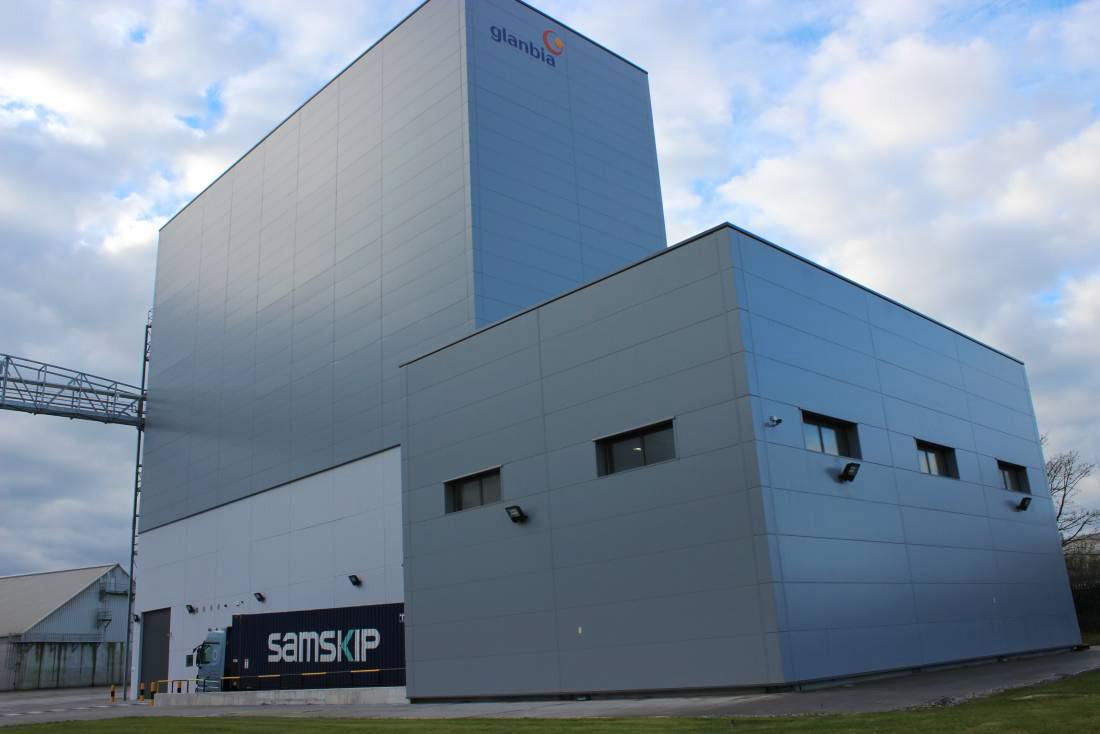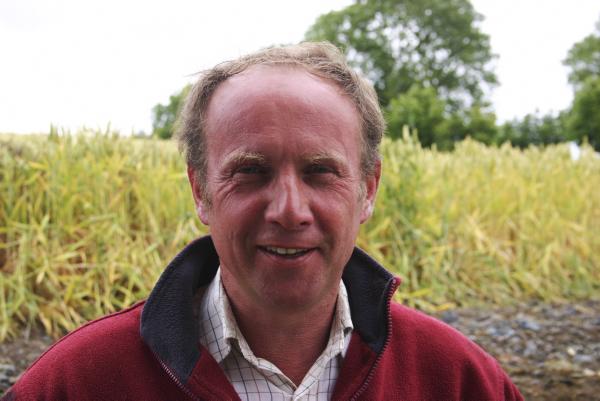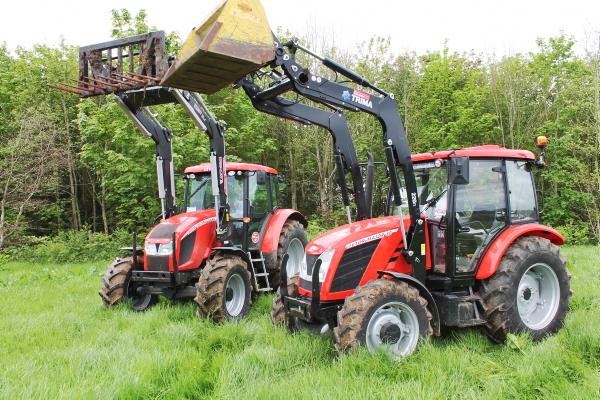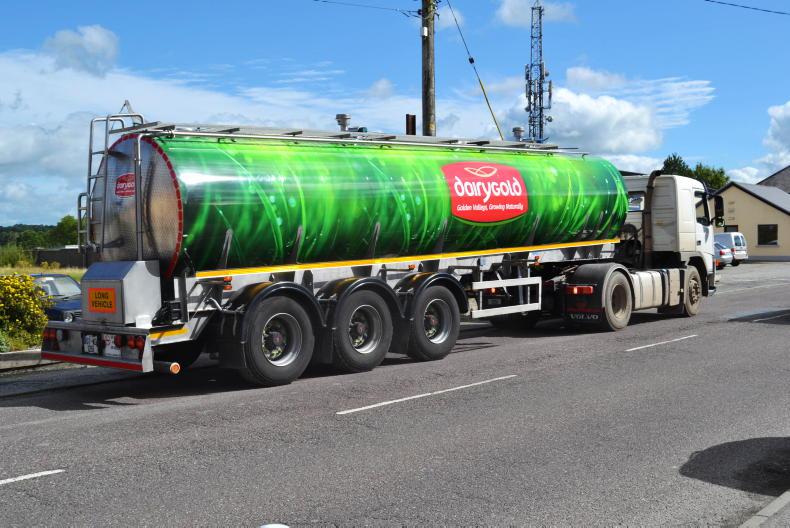Two weeks ago, Groups Together, an umbrella body for discussion groups, organised an interesting and varied tour in locations in Laois, Westmeath and Meath. The visits provided great examples of the development and entrepreneurial capacity of Irish people. Glanbia’s new oat mill and Dromone Engineering are top-notch facilities.
The new Glanbia oat mill in Portlaoise now sets the standard for equivalent facilities anywhere else in the world and it is a credit to all at the company. It is a flagship for the high standards of food production now evident in many sectors on this island and makes good use of our most market-sensitive cereal – oats.
The new mill was put in place after Glanbia won the contract to supply milled oat products for the McCann’s brand in the US. Donal Maloney of Glanbia told us that the McCann’s brand originated in Drogheda around 1800 and production moved to Sallins in 1964 when the brand was bought by Odlums. The brand was subsequently sold to Sturm Foods in the US in 2008 and the owners sought to continue to use high-quality Irish oats for its products.
Purity and traceability were key to Glanbia’s successful bid to supply milled Barra to Sturm. The Ballytore intake facility was then devoted entirely to oat assembly. The objective was to help ensure the non-contamination of oats with other cereals during the growing, harvesting, transport or milling phases. Success on these fronts opened the potential to produce and market gluten-free oatmeal.
A number of growers are now contracted to produce gluten-free oats. For those who may not know, gluten is a form of protein present in many cereals (but not oats) which causes digestive upset and gives rise to coeliac disease in humans. Coeliac sufferers can react very badly if the protein is consumed, so purity of species is paramount in this market.
The new mill produces different types of oatmeal for the McCann’s brand, plus a gluten-free version of all of these. It has intake capacity of about 70t per hour, and an annual processing capacity of roughly 13,000t of whole oats. But it was designed to be easily upgraded, with minimal alteration, to 18,000t annual capacity.
Cleaning and purity are paramount at the plant. Rigorous cleaning includes all standard devices in addition to an optical sorter to remove individual grains or particles on the basis of colour.
The cleaned grains are then dehulled and this removes about 28% of the weight. The kernels, or groats as they are called, are then put through the optical sorter and into a kiln. This latter process is to heat-stabilise the groats and kill microorganisms to enable storage. The oats are then prepared as either jumbo flakes, pinhead or normal flaked oats as a standard, or a gluten-free format.
The enterprise is based on business-to-business sales. Glanbia is not seeking to establish a retail brand of its own. The finished meal is packed into big bags (approximately 800kg) for export.
Attention to detail is paramount for all food production but gluten-free requires even more care and attention from seed to sack. Glanbia’s Maria O’Toole told us that production is organised as a closed loop supply chain, which begins with the production of the certified seed in the previous year. The spec on seed for gluten-free is higher than standard seed because there cannot be any tolerance for impurities of other species. Intensive visual inspection in the growing crop is used to check for stray plants.
Winter- and spring-sown crops of Barra can be grown on contract. The grower can sow the crop but the drill must be inspected by Glanbia staff before the certified seed can be put into the drill.
Crops can only be sown following a break crop or in ley ground. All crops must be managed by Glanbia advisers. Infield inspections then begin at heading-out when all crops are intensively inspected for strays.
A second consecutive crop will only be considered in specific situations, such as second after ley or possibly when the second crop is spring-planted. A failed gluten-free crop can still supply a Sturm contract providing it meets the spec and so it can still achieve a smaller premium. Municipal sludge should not be used on a field in the previous five years prior to growing any oats for Sturm.
Gluten-free crops are harvested using a specific dedicated Glanbia combine and the company expects to have two machines in operation next year. Harvesting is free to growers as long as the crop has been passed as gluten-free. A chaser bin is used with the combine and Glanbia also transports the crop post-harvest.
The sample is once again inspected before it can be tipped in Ballytore.
Glanbia is branding both its standard oat products and its gluten-free products. Donal told us that a €26/t premium is being paid to contracted growers for the McCann’s product and that €50/t is paid for gluten-free product, plus a saving on the cost of harvesting.
Efficiencies of scale
George Walsh and Sean and William Murphy operate a sizeable tillage farming unit in the midlands, based just south of Mullingar. When we visited, the yards were full of all sorts of machines to help get the crop planted, sprayed and harvested. But despite all the gear, George still needs to hire in contractors for critical planting and harvesting jobs.
In spite of all the machine capacity, George feels that he has gone beyond the scale required to be efficient. The farm extends over a radius of 30 miles and that means a lot of road work as well as the challenges of coping with broken weather at critical times.
“If we were further east with a more concentrated land base and bigger fields, it might be easier,” George said. The problem is that there is too little left on the bottom line after all the costs are paid.
This farming business works in close cooperation with the Murphy family, who provide a large proportion of the land on which the slurry is spread. The Murphys are a big pig producer and cattle-fattening business.
Slurry is an additional job at a busy time of year, but in this instance, the Murphys have turned this cost into an important requisite in their tillage operation, which helps to control production costs.
Machinery is always stretched beyond capacity and too costly. George would like to shed some of the metal, but there are not many alternatives for getting the work done.
We also visited the pig and cattle units at the Murphy farm. As well as feeding stock, William Murphy runs a mill to produce all their own feed. He buys all of the grain that George produces, and more from local farmers. Quality feed is paramount for performance, as pigs show its value on a daily basis.
“Quality is not just about instruments,” William said. “Feed accounts for up to 80% of pig production costs, so it is crucial that we get it right. By growing, storing and milling our feed, we are in a better position to keep on top of our production costs.”
Feed must deliver performance. “Pigs produced per sow is an important measure of performance, but so is the amount of meat produced per sow per year as a percentage of feed used,” William said.
Pig production is a scale-based operation which depends on numbers for efficiency. It is under cover and free from the vagaries of the weather, but not market forces. These guys must be good to survive and they do a great job.










SHARING OPTIONS